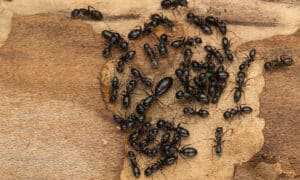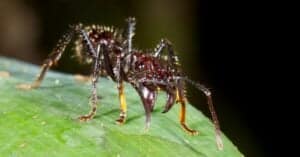Get ready to witness one of the most incredible natural spectacles in the world! Ants of Mississippi gear up for their annual emergence, and you won’t want to miss out. These tiny yet mighty creatures are masters of survival, and their emergence from their underground homes is carefully orchestrated. Are you curious about which ant types will emerge this summer in Mississippi? Keep reading!
As days grow longer and warmer, these insects are ready to show the world what they’re made of. Let’s explore the fascinating world of ants and discover the amazing diversity of these tiny creatures that call Mississippi home.
Ant Types: Pharaoh Ant (Monomorium pharaonis)
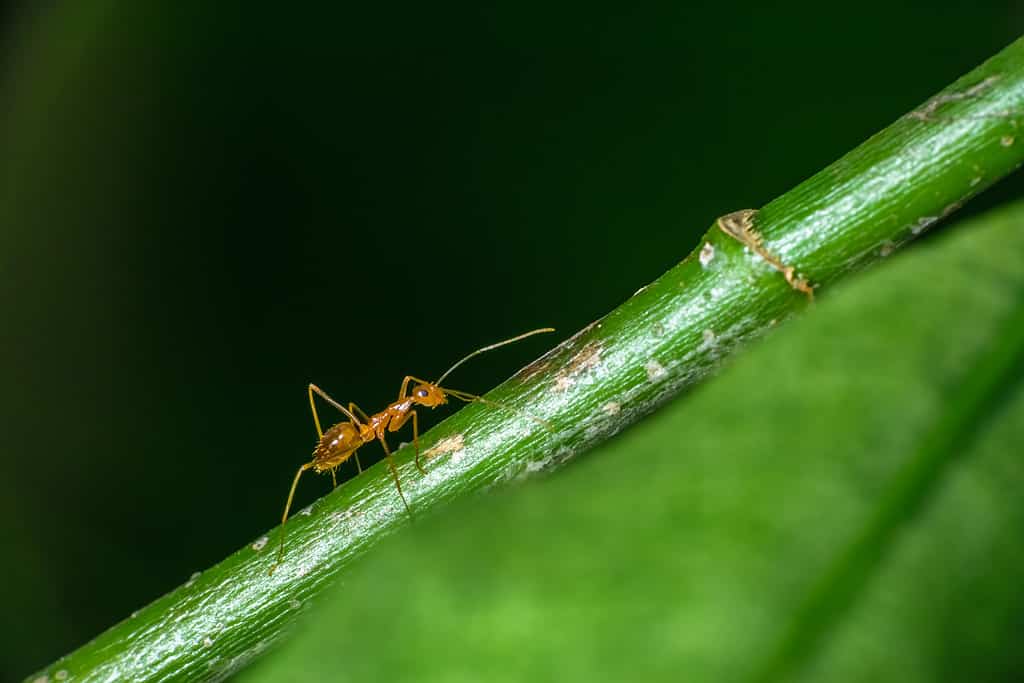
These ants can easily create new colonies when their current one is disturbed, and their colony size can vary greatly.
©iStock.com/Suman Ghosh
Pharaoh ants are a small ant species measuring around 0.07 inches in length. They are a nuisance to control and are commonly found in Louisiana and Mississippi. These ants can easily create new colonies when their current one is disturbed, and their colony size can vary greatly. Queen ants are typically darker in color compared to worker ants. The ants’ bodies range from light yellow to red with red or black-colored abdomens.
Pharaoh ants are commonly found in places that handle food. These include hospitals, grocery stores, and hotels. They also tend to reside near food and water sources in warm and humid areas. Their diet contains a range of food, including meats, syrups, fruits, and dead insects.
Pharaoh ants are prolific reproducers and do not require contact with other colonies to increase their population. This makes it easier for them to expand rapidly.
Unlike other ants, pharaoh ants don’t build nests, so it is difficult to locate them. However, one can spot them by following the trail of tiny objects. These trail of objects are typically food particles that lead to their location.
Pharaoh ants can be active throughout the year indoors. They tend to come out in large numbers between June and August. It is important to note that these ants cannot survive temperatures below 46.4 °F.
Ant Types: Little Black Ant (Monomorium minimum)
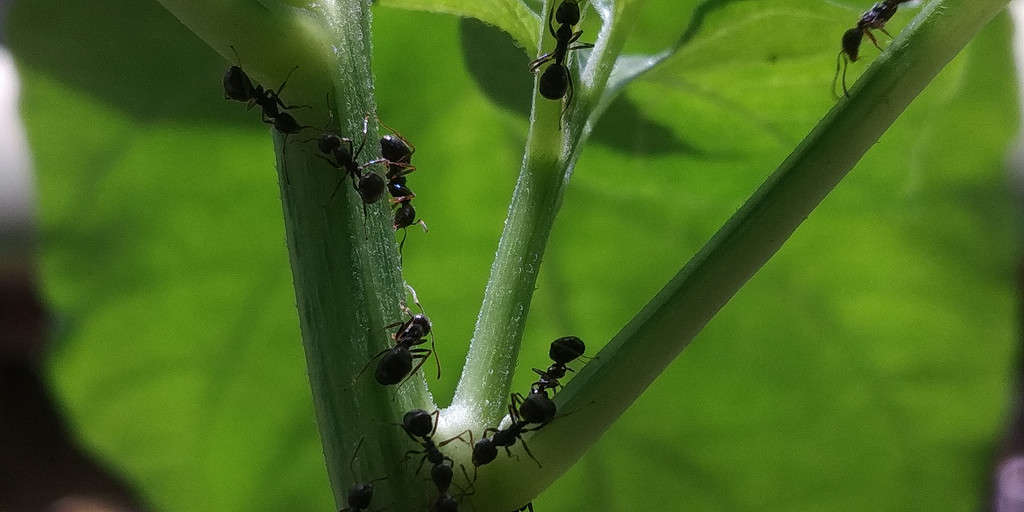
The little black ant (
Monomorium minimum) is a species of ant native to North America.
©iStock.com/Rahmat M Pandi
In Mississippi, the little black ant is a typical target for structural pests. These ants are quite small. Worker ants measure a mere 0.05 inches, and queens reach up to 0.15 inches in length. They exhibit dark-brown, black, or jet-black hues and possess 12-segmented antennae that culminate in a three-segmented tip.
Despite their diminutive size, these ants are unafraid to confront larger ant species in order to protect their food sources. They have a diverse diet that includes seeds, sweets, fruits and vegetables, live and deceased insects, meats, and aphids.
The little black ant is known for its adaptability regarding nesting behaviors. It can be discovered in the soil of open lawns or concealed beneath various items such as stones, bricks, wood, and logs.
Colonies of these ants can span from medium to extensive sizes, and they commonly have multiple queens. The mating season for little black ants occurs between June and August, leading to frequent swarms during Mississippi’s summer months.
Ant Types: Thief Ant (Solenopsis molesta)
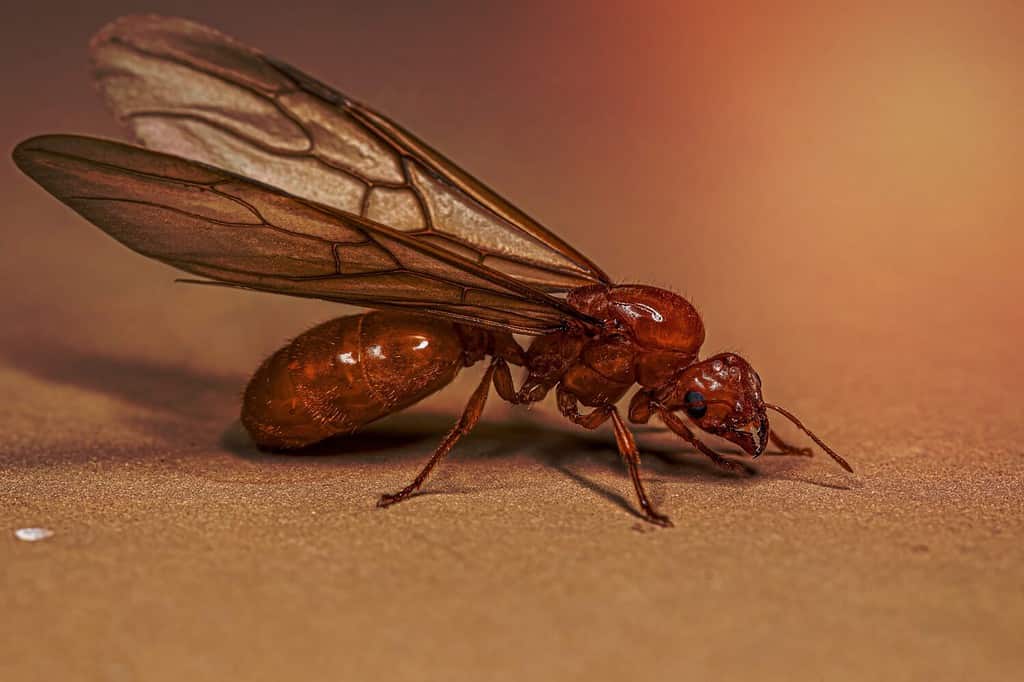
When thief ants infiltrate homes, they can become problematic.
©postolocanu/Shutterstock.com
Thief ants, also known as grease ants, are small insects that usually measure around 1/16 inch in size, though they can range from 1/32 inch to 1/8 inch. Exhibiting a variety of colors, such as yellow, bronze, and dark brown, these ants have a sleek, glossy exterior.
These ants have a diverse diet, consuming various organic materials like live and dead insects, mealybugs, and germinating seeds. Their adaptability allows them to thrive in different environments, including human residences, and they often construct nests in close proximity to other ant colonies from which they steal.
When thief ants infiltrate homes, they can become problematic. However, identifying their location is difficult due to their small size and remote nesting sites. Additionally, they do not always stay close to their colony and travel considerable distances searching for food. Their diminutive size enables them to access areas that other insects cannot.
In Mississippi, Solenopsis molesta can be observed during their nuptial flight, which takes place from late July through early fall.
Pavement Ant (Tetramorium caespitum)
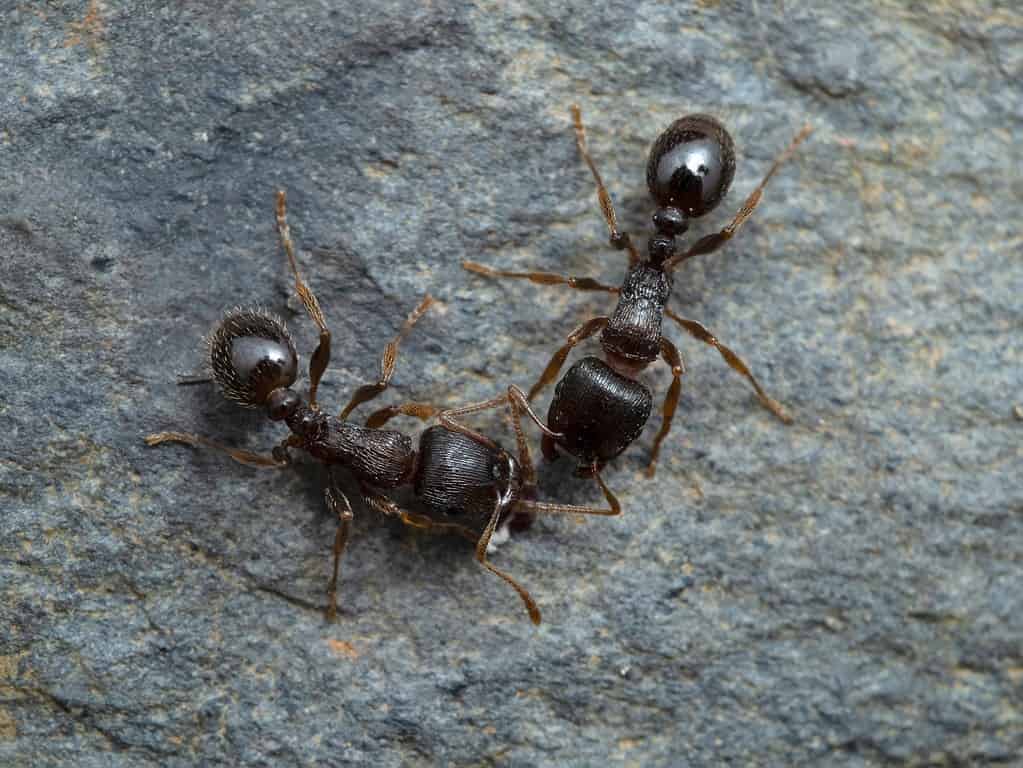
Two pavement ants (
Tetramorium immigrans) greet each other on stone.
©Ernie Cooper/Shutterstock.com
While all ants are social insects, the pavement ant takes it to a new level with their large and complex colonies. Workers of this species have reddish-brown to black bodies with paler legs and antennae. Their 12-segmented antennae have a three-segmented club, and they measure approximately 3/16 inches in length.
These ants feed on various types of food, such as honeydew, sweets, oil, seeds, and insects. Although they are likely to be found in ground-level masonry walls, they can also nest in walls, insulation, and under floors in buildings.
Pavement ant workers tend to become pests when they enter homes and start recruiting other colony members to access food or leftovers.
Outside, pavement ants typically nest under stones, pavement cracks, and near buildings. They will seek out any available food crumbs and invade buildings to find resources. Pavement ants will spread into new populations without timely intervention, eventually forming large colonies.
Mating between pavement ants does not require physical contact between partners. Instead, pheromones are released to signal mating readiness. Pavement ants are most active in Mississippi from late May to August and can be observed in their habitats inside and outside residential buildings.
Pale Field Ant (Formica pallidefulva)
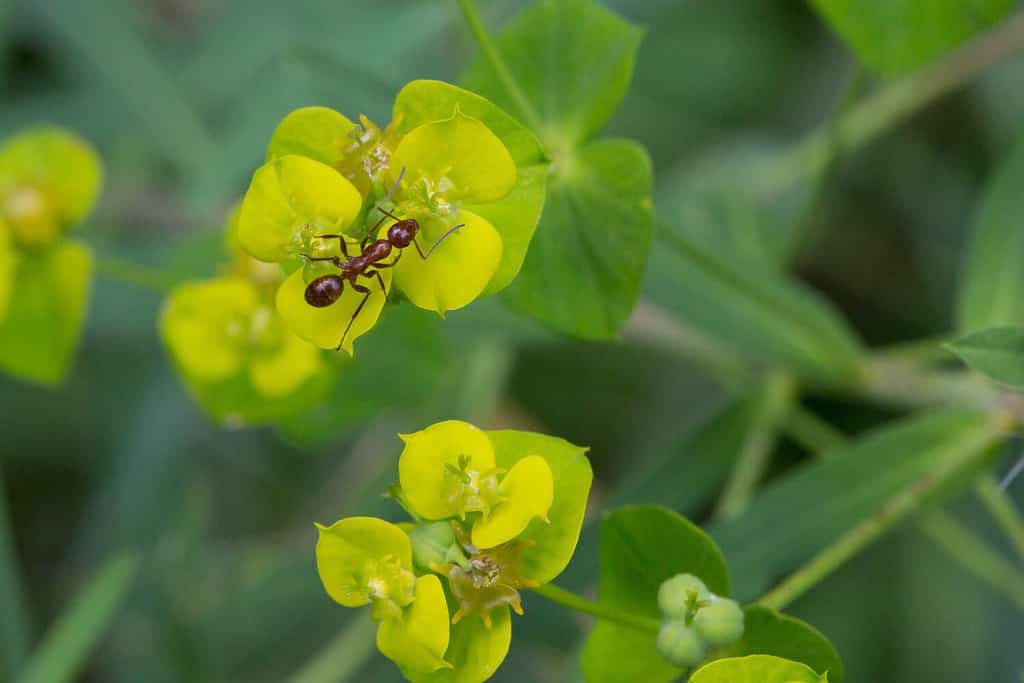
This ant exhibits a remarkable range of color variation, with the northern populations sporting deep brownish-black hues and the southern types displaying bright, coppery yellow.
©Elliotte Rusty Harold/Shutterstock.com
The widespread pale field ant has the ability to nest in a variety of habitats, which may account for its prevalence. This ant exhibits a remarkable range of color variation, with the northern populations sporting deep brownish-black hues and the southern types displaying bright, coppery yellow.
The queens of pale field ant measure between 0.3 to 0.5 inches, while workers range from 0.2 to 0.35 inches. These ants form large colonies that can reach up to 5,000 workers.
Field ants primarily consume honeydew found on shrubs and trees. They also have scavenging tendencies and are particularly drawn to meat. These ants can be found in various outdoor habitats, such as woodlands, grasslands, forests, lawns, parks, and rough ground, but they do not generally enter indoor areas for food.
Pale field ants are diurnal, with worker ants retreating to their nests at night and emerging in the morning to forage. During late summer, individual ants emerge from the nest a few at a time and take to the air, with the flights typically taking place in the morning around the time the sun reaches the nest.
These ants are most active in Mississippi during July and August, when large populations can be observed in outdoor habitats.
Sugar Ant (Camponotus consobrinus)
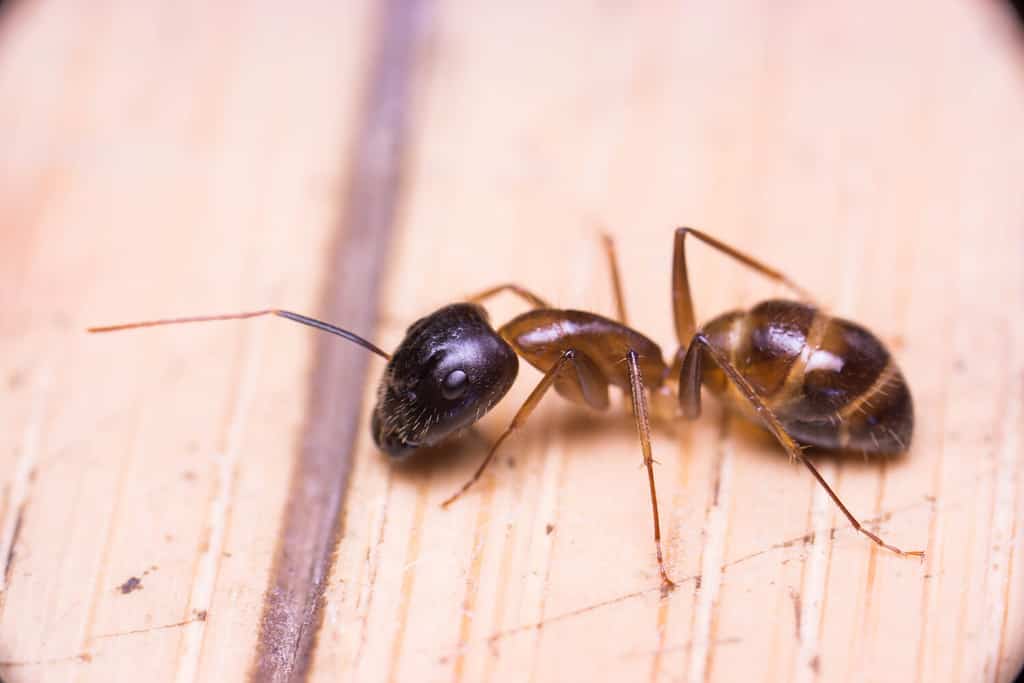
Sugar ants are omnivores, and during the summer months, they can be observed foraging under streetlights or house lights.
©Muhammad Naaim/Shutterstock.com
The sugar ant, also known as the banded sugar ant, originates from Australia. This type of ant varies slightly in size and shape, most measuring between 0.09 to 0.7 inches. These ants have a distinct appearance with large blackheads, a small waist, and a middle section that is brown in color.
Sugar ants are omnivores, and during the summer months, they can be observed foraging under streetlights or house lights. They collect honeydew from aphids and nectar secretions from plants. As sugar is a valuable source of energy, these ants put more effort into seeking out sweet things than other types of food.
Banded sugar ants thrive in mesic habitats and prefer to live in forests and woodlands. They can often be found in nests that are constructed in the soil. However, since these ants are attracted to sweets, they can also often be found in the kitchen.
In Mississippi, as temperatures rise, it is typical to observe sugar ants entering residences in search of food. These insects are especially active during July and August when their numbers are at their highest.
Other Insects Set To Emerge In Mississippi
Discover the variety of insects preparing to appear in Mississippi as temperatures rise and nature comes to life.
Eastern Lubber Grasshopper (Romalea microptera)
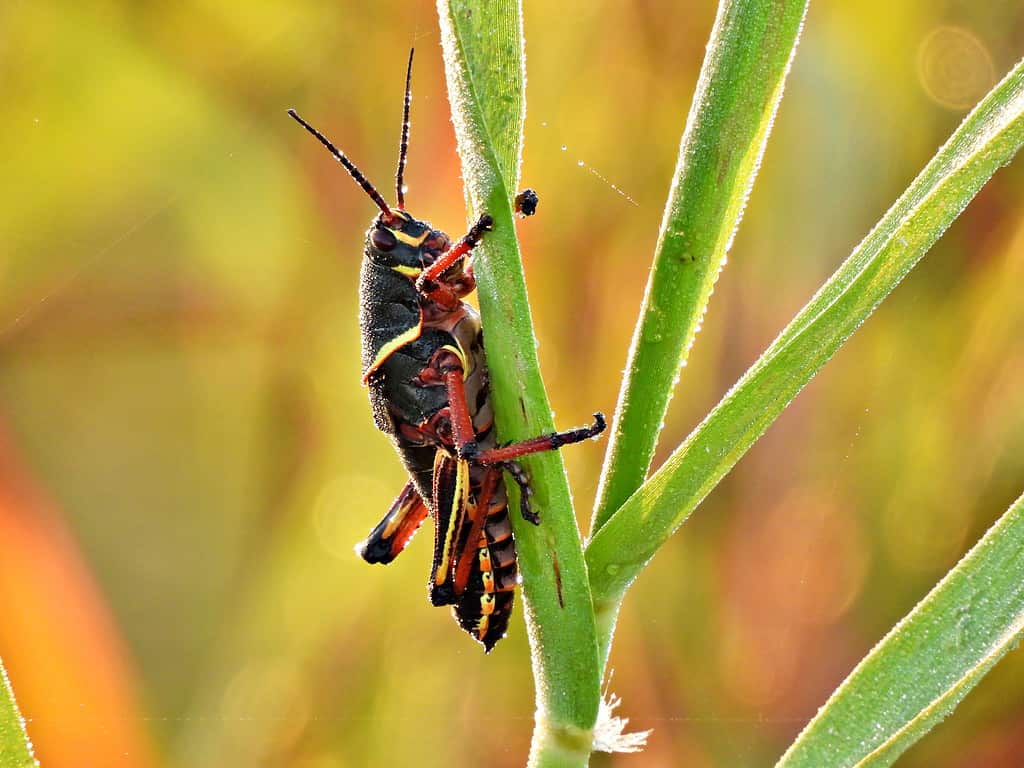
The Eastern Lubber
grasshopper
is very good at climbing.
©iStock.com/passion4nature
The eastern lubber grasshopper stands out as one of the more unique insect species in the southeastern United States, being the second largest in size within the state of Mississippi. Female specimens occasionally grow beyond 3 inches long, making them too bulky and cumbersome for flight or even effective hopping. But with that said, these grasshoppers grow to around 2.5 inches on average. Eastern lubber grasshoppers pose no threat to humans and, despite their large size, are less considered a nuisance to plant life than other grasshopper species.
Adult eastern lubber grasshoppers frequently showcase a predominantly yellow or tawny hue, accompanied by black accents on their antennae tips, pronotum, and abdominal segments. They are most commonly sighted from June to August or September and follow a yearly reproductive cycle, with only one generation a year.
Green June Beetle (Cotinis nitida)
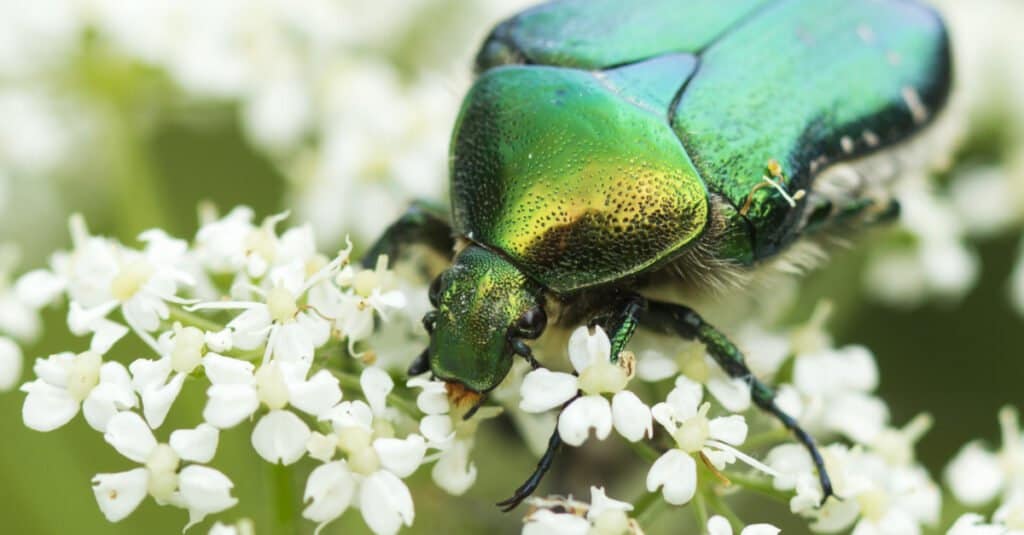
A Green June beetle eating flowers. These types of beetles are turf pests that eat a variety of vegetation.
©Galina Savina/Shutterstock.com
The green June beetle is a common insect pest found in the eastern region of the United States. It has a vast distribution range that includes most states situated east of the Mississippi River and portions of the Midwest.
These beetles are approximately one inch long and have green wings that appear dull and metallic. They also feature gold or brownish highlights on their sides and head and have shiny green underparts.
The green June beetle grubs are sizeable, and surprisingly, they are edible. Homeowners may stumble upon numerous white grubs on their driveways or sidewalks around the house.
In the summer, green June beetles swarm over both managed and unmanaged grassy areas, flying in huge numbers.
Brown Marmorated Stink Bug (Halyomorpha halys)
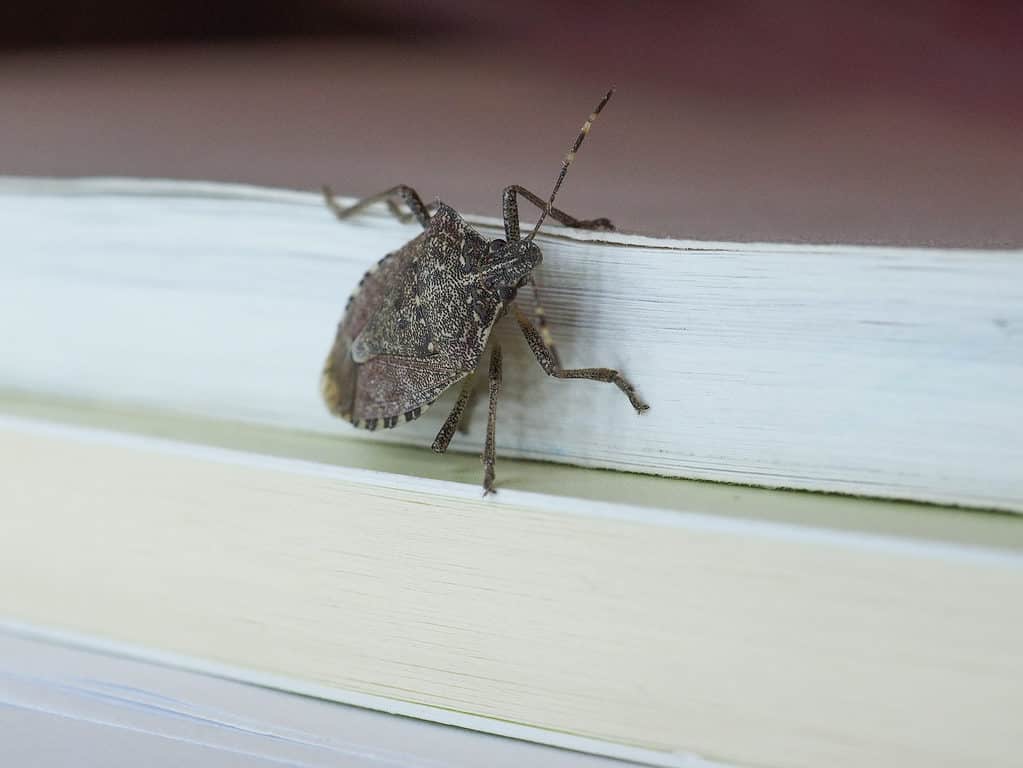
A stink bug on a window sill.
©Claudio Divizia/Shutterstock.com
The brown marmorated stink bug in Mississippi has become a top pest, causing widespread annoyance to many residents. It is believed that this pest made its way to the region by hitching a ride on shipping containers from China or Japan.
This insect has a shield-shaped body with brown spots and measures approximately 0.55 to 0.66 inches in length, similar to a dime’s size. The edges of its abdomen and the last two segments of its antennae have distinct broad bands that alternate between light and dark colors.
Although stink bugs can become a nuisance during large infestations, they pose no threat to humans or animals. When disturbed or crushed, these bugs emit an unpleasant odor from their scent glands located on their abdomen.
Typically, these bugs are most active between March and September, and they tend to search for wintering sites before the onset of fall.
Eastern Cicada Killer (Sphecius specious)
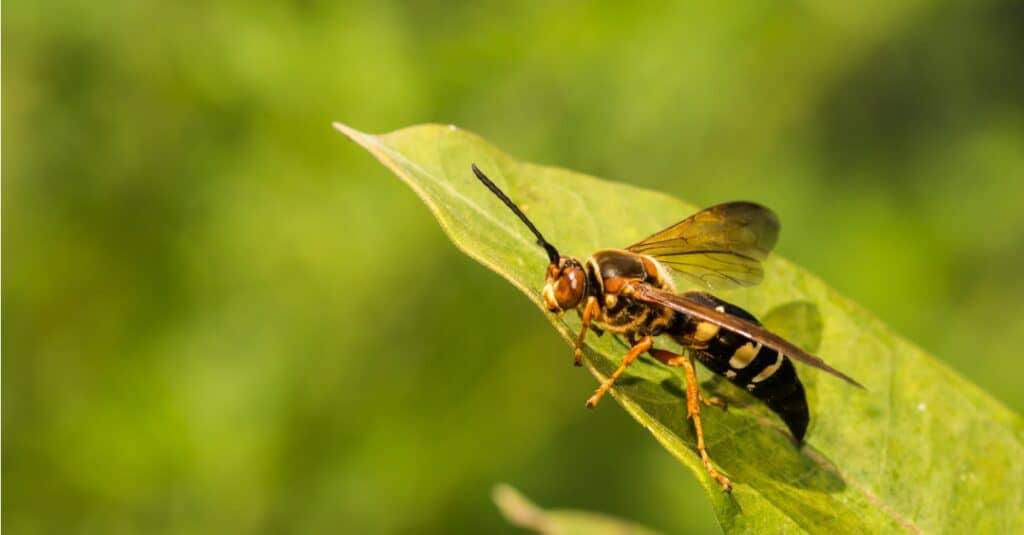
These
wasps are identified by their black
abdomens, highlighted with yellow markings.
©iStock.com/JasonOndreicka
Mississippi is home to the largest native wasp species known as eastern cicada killers, which can grow over 2 inches long. These wasps are identified by their black abdomens, highlighted with yellow markings.
Female cicada killers are the only ones that possess a stinger, which can cause pain if provoked. However, these wasps only sting in self-defense when they feel threatened. As long as you do not disturb cicada killers or their nests, there is no need to worry about being stung.
In late June or July, adult cicada killers can be observed flying around flowers and digging burrows in sandy or light soil.
The photo featured at the top of this post is © postolocanu/Shutterstock.com
Thank you for reading! Have some feedback for us? Contact the AZ Animals editorial team.




